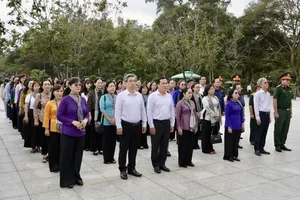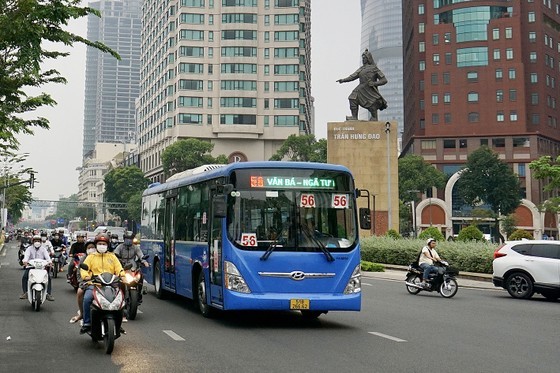 |
| A bus using clean fuel runs on Ton Duc Thang Street, District 1 (Photo: SGGP) |
Departing at 5:45 am on February 12 at the new Mien Dong bus station, the bus with number plate 51B-208.03 operating on the route 93 from Ben Thanh to old Mien Dong bus station carried nearly 20 passengers. In the afternoon of the same day, a bus with number plate 50F-002.37 traveled along the route from Quang Trung Software City to the new Mien Dong bus station with only 15 passengers.
According to many transport units, the ratio of passengers / capacity of the vehicle reaches about 30 percent-40 percent depending on various routes. Although this number of passengers is not as many as before when the Covid-19 epidemic has not yet broken out, it is better than a few months ago. To achieve this result, in the past time, transport companies and responsible agencies have made efforts to increase the service quality of the city bus system.
It is worthy noting that the first electric bus line was put into operation in early March 2022. This environmentally friendly bus will go through crowded streets such as Le Lai, Ham Nghi, Pasteur, Nguyen Cong Tru, Ky Con in District 1.
In August 2022, the non-subsidized intercity bus code 63-1 for the Tan Phu Bus Station - Tien Giang Bus Station route officially came into operation. Also in 2022, Ho Chi Minh City enhanced bus connection with Tan Son Nhat Airport by opening a new bus route number 72-1 along the route Tan Son Nhat Airport - Long Thanh - Dau Giay - Vung Tau Expressway.
Moreover, the southern metropolis has restored bus route 109 from Saigon Bus Station to Tan Son Nhat Airport and adjusted the bus route 103 connecting to Tan Son Nhat Airport in addition to opening 4 new intercity bus routes connecting with the Southern province of Dong Nai.
This year, Ho Chi Minh City will open dozens of new bus routes, including 4 electric bus routes and 4 intercity bus routes connecting the southern provinces of Binh Duong and Tay Ninh, 2 mini bus routes, and a bus route connecting the existing Mien Dong bus station and the new Mien Dong bus station with the city.
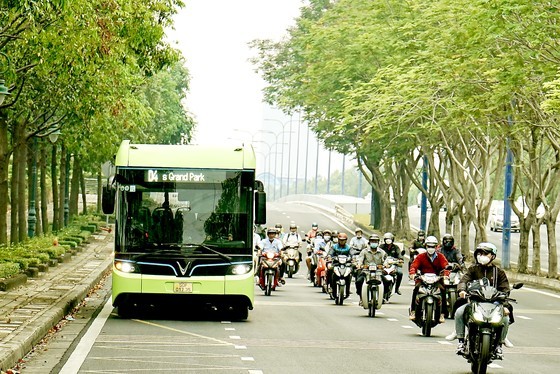 |
| A bus is running on Mai Chi Tho Street, Thu Duc City (Photo: SGGP) |
According to the municipal People's Committee’s Decision 3998/QD-UBND dated October 27, 2020 on approving the project of enhancing public passenger transport combined with control of personal motor vehicles in the city, city leaders targeted that public transport must meet 25 percent of the market share by 2030.rom now to that deadline is not far away, but in view of the actual operation of the bus, it seems that reaching the set limit is extremely difficult.
However, until now, the market share of public passenger transport by bus is still small, no more than 10 percent. is a fact that in recent years, public transport by bus is facing fierce competition. Right before the outbreak of the Covid-19 epidemic, the number of bus passengers has continuously decreased. The reason is not because the demand for travel decreases but people take other transport means.
For instance, with a smart mobile phone, people can book a cab or a motorbike easily using internet data by providing the details of pickup and drop location. Furthermore, taxi or motorbike drivers will pick up and drop passengers at their house whereas people must go to bus stations to wait for a bus of their route. Ride-hailing technology transport companies have continuously offered many incentive programs, thereby affecting the number of bus passengers.
Increased private means of transport is also the cause of the decrease in bus passengers. A surge in means of transport causes frequent traffic jams, leading to many buses being unable to ensure their journey. As a result, many passengers, especially students, switch to private means of transport instead of buses.
Until now, passengers have still opted for buses because of low cost.


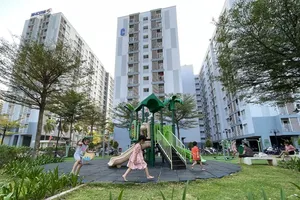

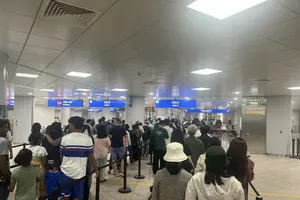


)


